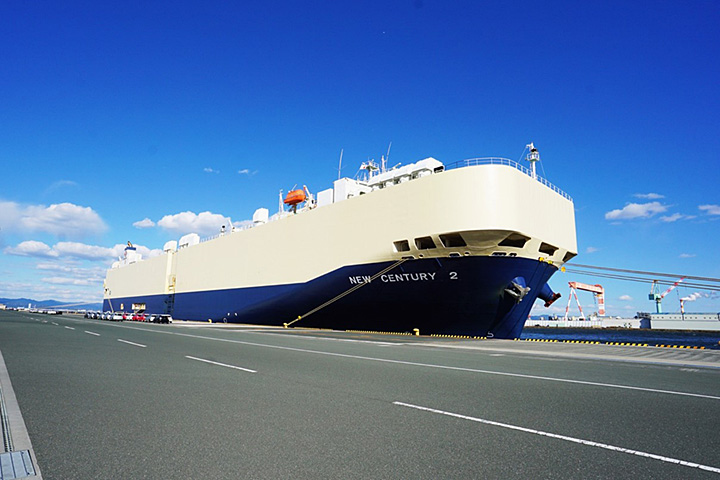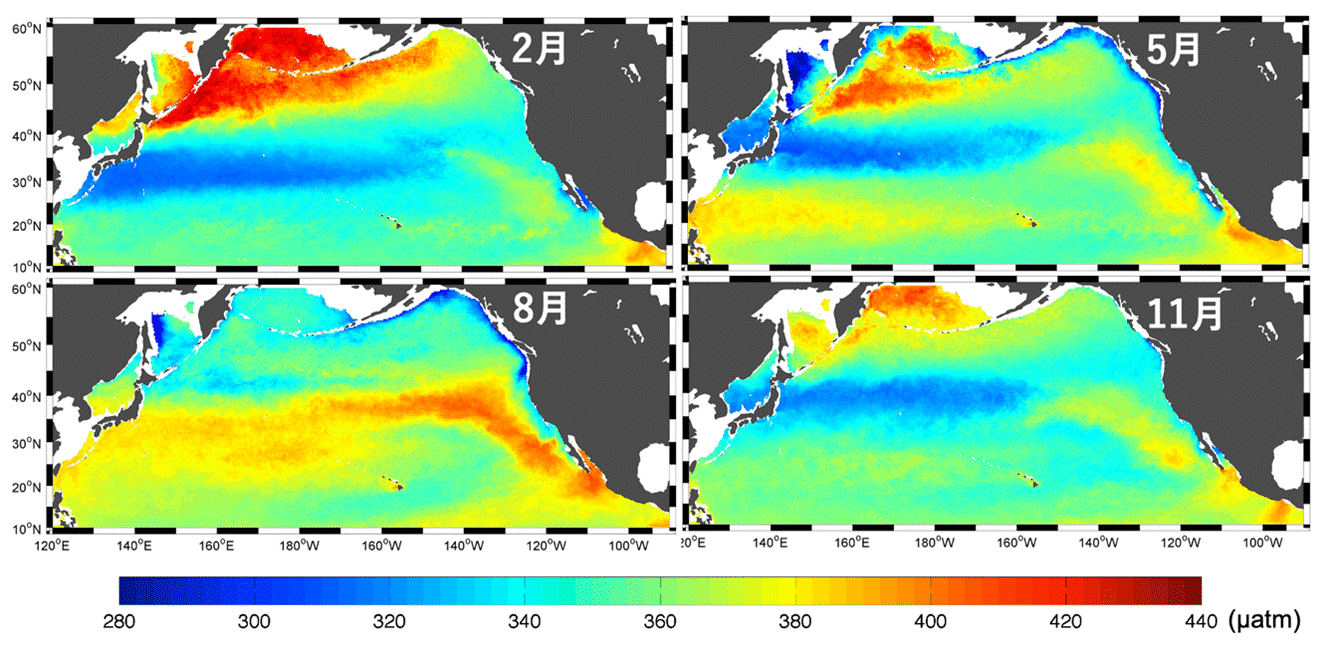Japan-North America Route
Outline and Results
Since 1995, we have been conducted GHG observations in the atmosphere and ocean surface in the Japan-North America route. From 1995 to 1999, the lumber ship SKAUGRAN, belonging to Seaboard International Shipping Co. of Canada, calling at the ports of Vancouver, Seattle, Los Angeles, and Japan (Tomakomai, Sendai, Tokyo, Kitakyushu, etc.), made a total of 37 round-trip observations between the west coast of North America and Japan over a period of 6 to 7 weeks.
From 1999 to 2001, the container ship "ALLIGATOR HOPE" belonging to Mitsui O.S.K. Lines (MOL) cooperated with us, sailing between Tokyo and Vancouver on a 5-week interval, making a total of 16 round trips to conduct high frequency observations especially in the high latitude waters of the North Pacific.
TOYOFUJI SHIPPING CO., LTD. has been participating in this project since 2001, and GHG observations have continued for more than 20 years (excluding periods of interruption due to vessel changes).
The car carrier "PYXIS" which carried out observations from 2001 to 2013, and the "NEW CENTURY 2" (photo) now in charge of observations from 2014 to the present, operate two routes from their home port of Tahara, Aichi, one to and from the west coast of North America and the other to and from the east coast of North America via the Panama Canal, achieving approximately 170 round-trip observations by the end of 2023.

Through the NIES observations for over 20 years, we have revealed seasonal (Figure) and interannual changes in ocean surface CO2 concentration (partial pressure of CO2). While the maximum seasonal change in atmospheric CO2 concentration is about 20 ppm, the maximum partial pressure of CO2 (pCO2) in surface seawater reaches 150 ppm (µatm), indicating large spatio-temporal changes due to ocean circulation and biological activities.
The North Pacific is an area of high production activity by marine organisms, which has resulted in a significant decrease in the ocean surface pCO2. Changes in ocean circulation and biological activity associated with ocean warming and acidification are likely to alter the distribution of ocean surface pCO2, and therefore, monitoring of the ocean surface pCO2 will be necessary for the future.

It shows the averaged monthly pCO2 distributions in February, May, August and November.

